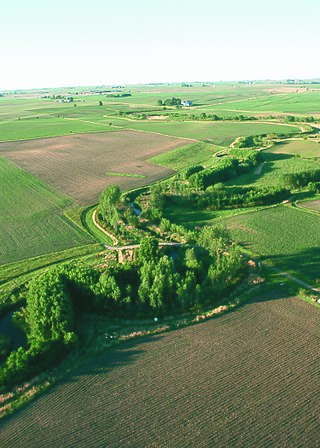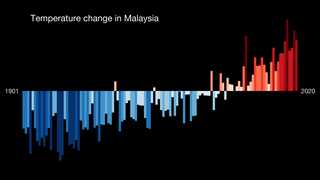
Lorna Regina "Loren" Bautista Legarda is a Filipina politician, environmentalist, cultural worker, and former journalist who is currently serving as a Senator and the incumbent president pro tempore of the Senate of the Philippines since 2022. This also makes her the first woman to serve as Senate President Pro Tempore in the upper chamber's history. Before entering politics, she began her career as a news reporter until becoming a news anchor. She previously served three terms in the Senate from 1998 to 2004 and from 2007 to 2019. She is the longest-serving female Senator in the history of the Senate, and the only female in the Philippines to top two senatorial elections: 1998 and 2007. Legarda was also the House Deputy Speaker during her three-year stint as the representative of Antique from 2019 to 2022.
The World Conference on Disaster Risk Reduction is a series of United Nations conferences focusing on disaster and climate risk management in the context of sustainable development. The World Conference has been convened three times, with each edition to date having been hosted by Japan: in Yokohama in 1994, in Hyogo in 2005 and in Sendai in 2015. As requested by the UN General Assembly, the United Nations Office for Disaster Risk Reduction (UNDRR) served as the coordinating body for the Second and Third UN World Conference on Disaster Reduction in 2005 and 2015.

Climate change adaptation is the process of adjusting to the effects of climate change. These can be both current or expected impacts. Adaptation aims to moderate or avoid harm for people. It also aims to exploit opportunities. Humans may also intervene to help adjustment for natural systems. There are many adaptation strategies or options. They can help manage impacts and risks to people and nature. Adaptation actions can be classified in four ways: infrastructural and technological; institutional; behavioural and cultural; and nature-based options.

Disaster risk reduction (DRR) is a systematic approach to identifying, assessing and reducing the risks of disaster. It aims to promote sustainable development by increasing the resilience of communities to any disasters they might face. DRR is normally used as policies intended to "define goals and objectives across different timescales and with concrete targets, indicators and time frames." The concept is also called disaster risk management (DRM).
The effects of climate change in Florida are attributable to man-made increases in atmospheric carbon dioxide. Floridians are experiencing increased flooding due to sea level rise, and are concerned about the possibility of more frequent or more intense hurricanes.

Urban resilience has conventionally been defined as the "measurable ability of any urban system, with its inhabitants, to maintain continuity through all shocks and stresses, while positively adapting and transforming towards sustainability".

Climate change is a critical issue in Bangladesh as the country is one of the most vulnerable to the effects of climate change. In the 2020 edition of Germanwatch's Climate Risk Index, it ranked seventh in the list of countries most affected by climate calamities during the period 1999–2018. Bangladesh's vulnerability to the effects of climate change is due to a combination of geographical factors, such as its flat, low-lying, and delta-exposed topography, and socio-economic factors, including its high population density, levels of poverty, and dependence on agriculture. The impacts and potential threats include sea level rise, temperature rise, food crises, droughts, floods, and cyclones.

The United Nations Office for Disaster Risk Reduction (UNDRR) was created in December 1999 to ensure the implementation of the International Strategy for Disaster Reduction.

The Climate and Development Knowledge Network (CDKN) works to enhance the quality of life for the poorest and most vulnerable to climate change. CDKN does this by combining research, advisory services and knowledge management in support of locally owned and managed policy processes. It works in partnership with decision-makers in the public, private and non-governmental sectors nationally, regionally and globally.
Climate resilience is defined as the "capacity of social, economic and ecosystems to cope with a hazardous event or trend or disturbance". This is done by "responding or reorganising in ways that maintain their essential function, identity and structure while also maintaining the capacity for adaptation, learning and transformation". The key focus of increasing climate resilience is to reduce the climate vulnerability that communities, states, and countries currently have with regards to the many effects of climate change. Efforts to build climate resilience encompass social, economic, technological, and political strategies that are being implemented at all scales of society. From local community action to global treaties, addressing climate resilience is becoming a priority, although it could be argued that a significant amount of the theory has yet to be translated into practice.
Community resilience is the sustained ability of a community to use available resources to respond to, withstand, and recover from adverse situations. This allows for the adaptation and growth of a community after disaster strikes. Communities that are resilient are able to minimize any disaster, making the return to normal life as effortless as possible. By implementing a community resilience plan, a community can come together and overcome any disaster, while rebuilding physically and economically.

Nature-based solutions is the sustainable management and use of natural features and processes to tackle socio-environmental issues. These issues include for example climate change, water security, food security, preservation of biodiversity, and disaster risk reduction. Through the use of NBS healthy, resilient, and diverse ecosystems can provide solutions for the benefit of both societies and overall biodiversity. The 2019 UN Climate Action Summit highlighted nature-based solutions as an effective method to combat climate change. For example, NBS in the context of climate action can include natural flood management, restoring natural coastal defences, providing local cooling, restoring natural fire regimes.

Climate change has had large impacts on the ecosystems and landscapes of the US territory Puerto Rico. According to a 2019 report by Germanwatch, Puerto Rico is the most affected by climate change. The territory's energy consumption is mainly derived from imported fossil fuels.

Climate change is having serious impacts in the Philippines such as increased frequency and severity of natural disasters, sea level rise, extreme rainfall, resource shortages, and environmental degradation. All of these impacts together have greatly affected the Philippines' agriculture, water, infrastructure, human health, and coastal ecosystems and they are projected to continue having devastating damages to the economy and society of the Philippines.

Climate change is having a considerable impact in Malaysia. Increasing temperatures are likely to greatly increase the number of heatwaves occurring annually. Variations in precipitation may increase the frequency of droughts and floods in various local areas. Sea level rise may inundate some coastal areas. These impacts are expected to have numerous environmental and socioeconomic effects, exacerbating existing environmental issues and reinforcing inequality.
Ecosystem-based adaptation (EBA) encompasses a broad set of approaches to adapt to climate change. They all involve the management of ecosystems and their services to reduce the vulnerability of human communities to the impacts of climate change. The Convention on Biological Diversity defines EBA as "the use of biodiversity and ecosystem services as part of an overall adaptation strategy to help people to adapt to the adverse effects of climate change".

Sustainable Development Goal 13 is to limit and adapt to climate change. It is one of 17 Sustainable Development Goals established by the United Nations General Assembly in 2015. The official mission statement of this goal is to "Take urgent action to combat climate change and its impacts". SDG 13 and SDG 7 on clean energy are closely related and complementary.

Sustainable Development Goal 11, titled "sustainable cities and communities", is one of 17 Sustainable Development Goals established by the United Nations General Assembly in 2015. The official mission of SDG 11 is to "Make cities inclusive, safe, resilient and sustainable". The 17 SDGs take into account that action in one area will affect outcomes in other areas as well, and that development must balance social, economic and environmental sustainability.

Climate change in Fiji is an exceptionally pressing issue for the country - as an island nation, Fiji is particularly vulnerable to rising sea levels, coastal erosion and extreme weather. These changes, along with temperature rise, will displace Fijian communities and will prove disruptive to the national economy - tourism, agriculture and fisheries, the largest contributors to the nation's GDP, will be severely impacted by climate change causing increases in poverty and food insecurity. As a party to both the Kyoto Protocol and the Paris Climate Agreement, Fiji hopes to achieve net-zero emissions by 2050 which, along with national policies, will help to mitigate the impacts of climate change.

C. Emdad Haque is a Canadian academic, environmentalist, and author. He is a professor in the Natural Resources Institute of the Clayton H. Riddell Faculty of Environment, Earth, and Resources at the University of Manitoba and Chief Technical Advisor at the Bangabandhu Centre of Bangladesh Studies in Canada.


















